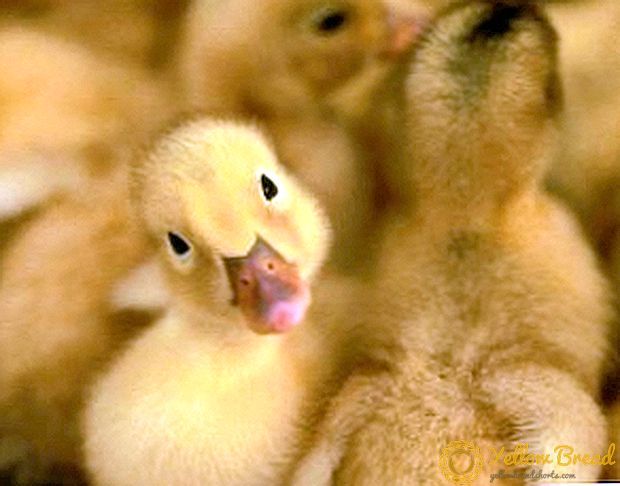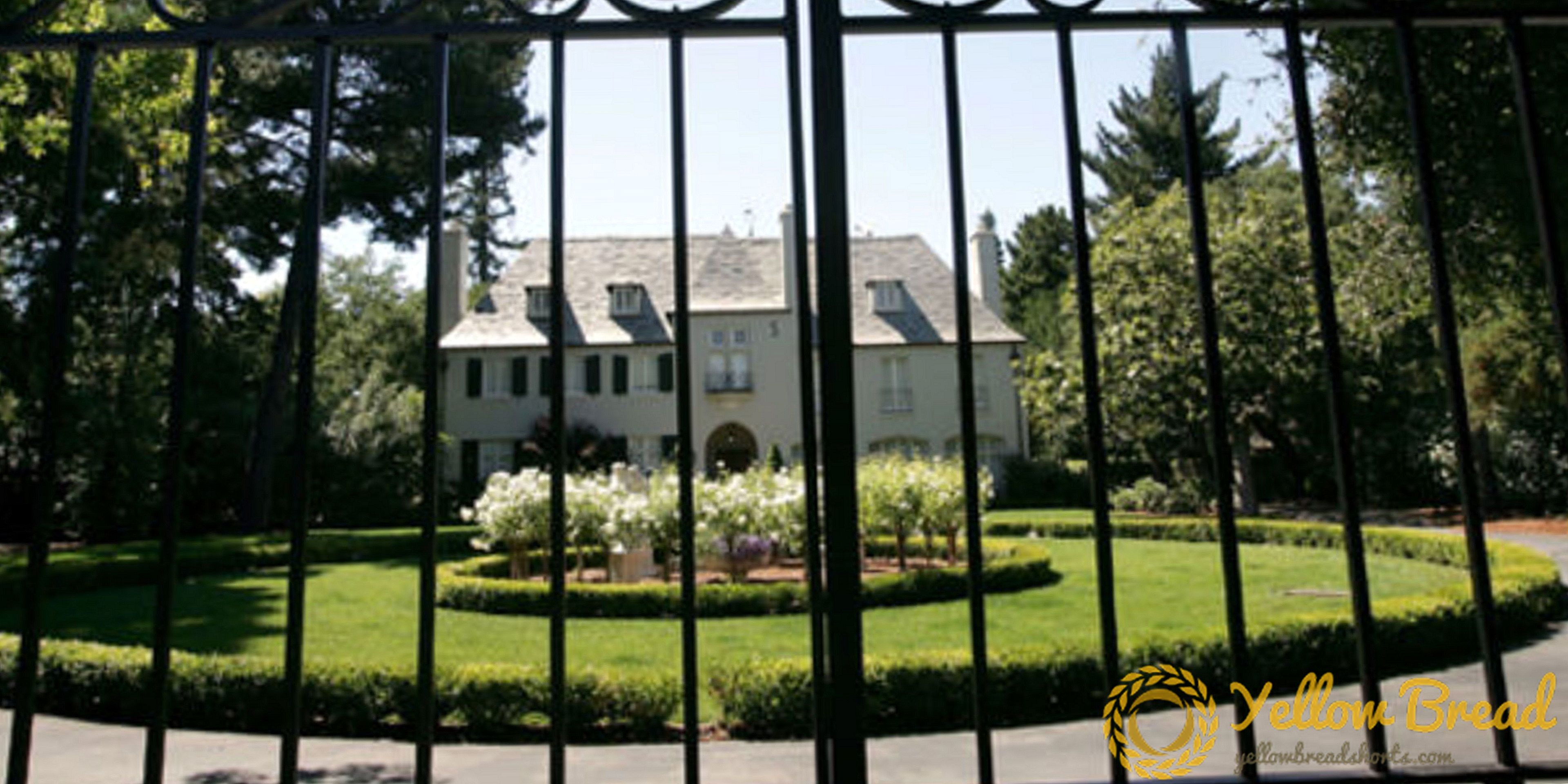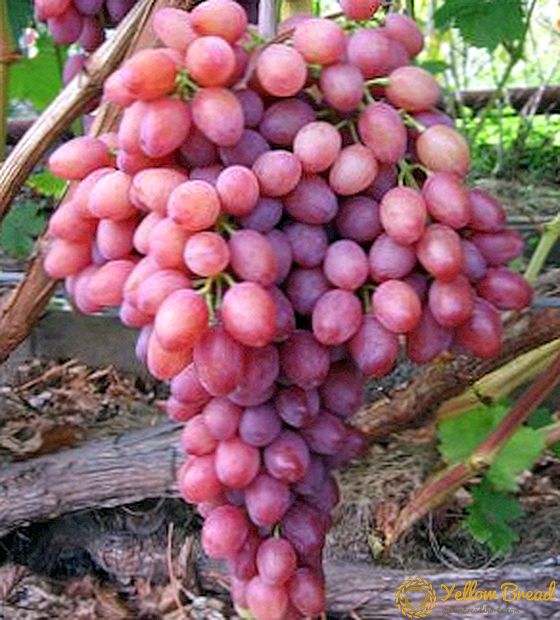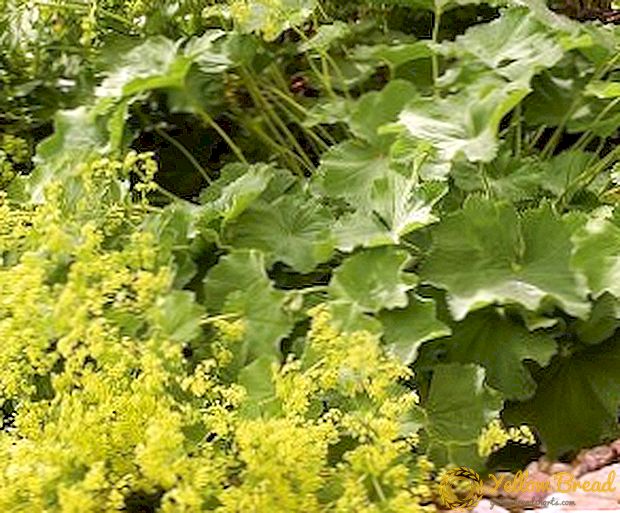
Geese belong to picky poultry.
Caring for them, as well as the preparation of proper nutrition will not be a huge problem for you.
The first month of the newborn goose plays a very large role in their lives.
At this time, you need to organize the proper maintenance and nutrition of chicks.
A special place is occupied by the goslings' food. The main thing is that it was high quality and rational.
You will learn about feeding goslings at different periods of their age in our today's article.
Eating goslings at first their lives

What is included in the food of goslings that have just been born?
At the moment there is a fairly diverse selection of feed for chicks.
The basis of their nutrition from the first days of life are: cereals (give them in the form of gruel or powdered form), wheat bran, products that contain milk (various curd masses), hard boiled eggs, root vegetables, chopped fresh greens, and what it is necessary to give them is shells and chalk (in order to prevent a lack of calcium).
An important factor in feeding goslings is the freshness of food and water. It is also important to monitor the cleanliness of the dishes with which they eat.
It is necessary to ensure that the feed does not turn sour in the feeders, there is no mold there. All of these factors can lead to upset stomach in little chicks, and even worse, cause diseases of goslings that will affect their survival.
For example, the fungal disease Aspergillosis can develop, it can lead to death, and also it cannot be cured.
In the first couple days of chick life feed them oftenabout seven times a day.
Feeding the goslings depends on their growing direction.
List required products, which are included in the feed goslings in the first period of their life:
- Hard boiled eggs, to which you need to add wheat or cereals (semolina, millet, oatmeal, barley, barley).
- Further, their diet should include softened white bread.
- The third necessary component is the feed, which you can cook yourself or buy in the store.
- The next thing you need to add is bran.
- A useful component is the addition to the diet of dairy products: curd mass, yogurt, etc.
- And last, but also very important is fresh chopped greens or vegetables: carrots, beets, etc.
It is imperative not to forget that the feed is crushed or ground.
Approximate amount of food for goslings at the age from one to five days:

- Grain in the amount of 15 grams.
- Wheat bran in the amount of 3 grams.
- Dry food in the amount of 2 grams.
- Carrot in the amount of 5 grams.
- Greens in the amount of 5 grams.
- Milk in the amount of 25 grams.
- Shell in the amount of 0.3 grams.
Meals goslings aged from six to ten days of life:
- Grain in the amount of 21 grams.
- Wheat bran in the amount of 6 grams.
- Dry food in the amount of 4 grams.
- Carrot in the amount of 20 grams.
- Greens in the amount of 20 grams.
- Milk in the amount of 50 grams.
- Shell in the amount of 0.5 grams.
Eating goslings aged from six to ten days, if the diet includes boiled vegetables:

- Grain in the amount of 15 grams.
- Wheat bran in the amount of 5 grams.
- Greens in the amount of 30 grams.
- Boiled potatoes or beets in the amount of 20 grams.
- Animal feed in the amount of 7 grams.
- Cake in the amount of 4 grams.
- Milk in the amount of 50 grams.
- Shell in the amount of 0.5 grams.
Asking about the proper nutrition of goslings, it is necessary to remember to add fresh greens to their daily diet.It is very important for their body in the first time of life.
Little goslings like finely chopped clover, nettle, alfalfa, dandelion, euphorbia, wheat grass, legumes and many other herbs with small leaves.
It must be remembered that all greens should be fresh, sluggish, coarse, and with thick stems of grass they will not.
Already at the age of five days from the birth, chicks can add fish or meat and bone meal to their food. Also in their diet, you can add potatoes and cake.
It is very important to monitor the water diet of goslings. It must be remembered that the water does not contain any impurities. Water can be taken from a water supply system, a well, a flowing reservoir, but the main thing is to keep it clean.
It is necessary to ensure that there is always enough water for the chicks, otherwise a lack of drinking can affect their growing body and their appetite.
In spring and autumn, the basis of the diet is not only the little goslings, but also the adults are fresh grass. But it is necessary to mention that goslings under the age of thirty days should not be given grass with drops of morning dew or with drops remaining after the rain.
It is necessary to remember to add to the diet of goslings of mineral substances. Near the feeder with the main feed, you need to put an additional tray with crushed chalk, gravel, shells, gravel or sand.
What should be included in the nutrition of chickens in the early spring so that the absence of green fodder is not felt? In the feed of goslings in the period of early spring should include such substances as: fish oil, herbal vitamin flour, germinated oats and barley.
In order to reduce the possibility of death of young goslings, it is necessary to ensure their maintenance, and to feed the young properly.
Their food should be comprehensive and varied.in order to strengthen their immunity and health, prevent the occurrence of diseases, greatly increase their life span, as well as increase their productivity.
Weak goslings should be given a mixture of milk and yolk.To do this, take half a glass of milk, one yolk, a little bit of sugar, penicillin and biomitsin at the tip of a knife, mix all this and feed the chicks until the final recovery.
It is important to give goslings access to the water in order to wash the beak. Because if the nasopharynx clogs, this can lead to tragic consequences.
Diet goslings depending on their age

Nowadays, the chicken feed system has been improved. It contains all the necessary daily need for various nutrients, dietary supplements, depending on their age and productivity.
Depending on the content of the goslings, three feeding methods are used: wet, combined and dry. Most of the combined and wet type of food are suitable for feeding geese, especially these types are used in poultry farms.
To do this, use inexpensive vegetable feed: green grass, carrots, potatoes, pumpkin, cabbage leaves, turnips, rutabaga, tops, mixed silage, and also feed animals that contain a lot of moisture: reverse, whey, fresh fish and many others.
When feeding small goslings with wet mash, you need to feed them three times a day.
The first time they need to be fed in the morning, but it must be borne in mind that they can digest the amount of wet mash eaten in the morning before the next feed in about one hour.
The second feeding with a wet mash should be carried out in the afternoon. When a wet mash is eaten by goslings, it needs to be removed, otherwise it almost immediately sours and becomes covered with mold, therefore need to clean up the remaining feed from trays at least once a week.
The consistency of wet food goslings is necessary to be such that when, taking it in hand and squeezing, the mass crumbled into pieces. When such a state of food does not occur, but rather the food is glued together and becomes pasty, then it should not be given to geese.
Twenty percent of mill waste can be added to goose wet food. And if you add twenty percent of bran to the mash, you get a very good consistency of mash.
Fresh wheat should be added to the wet mash, but only coarse, otherwise the mash can turn into dough.Wheat should be no more than twenty percent.
Wet food can be put on top of dry food.
In order to make a proper diet and regime for geese, you need to know about their biological features:
- The first biological feature is taking into account the breeding season of geese. Because during this period their appetite decreases, therefore in their food they make more high-calorie.
- The second biological feature: females who have increased egg production, more than sixty percent, more energy is consumed, so protein is added to the feed as well as feed fat is added to restore it.
- The third biological feature: all geese very well digest protein, and especially they like animal protein: fish and meat and bone meal.
In the combined method of feeding geese, their feeding should consist of both feed and succulent feed. For example, in autumn and winter, birds should be provided with silage in the amount of 200 grams, sugar beet in the number of half a kilogram, potatoes in the amount of 300 grams per goose per day.
During the breeding period, feeding of geese should be more nutritious.It is impossible to reduce either the nutritional value or the amount of feed, because the more well-fed geese have egg production more than the thin ones.
Birds can eat a very large amount of fresh greens, as well as very juicy and rough feed, while they are very well absorbed.
During the day, an adult bird can consume about two kilograms of greenery, which will satisfy its need for all nutrients and vitamins.
Birds can eat about two hundred grams of crushed corncobs per day. But that's not all, they can also eat millet or oat chaff, clover flour about three hundred grams per goose a day.
When feeding birds with dry coarse fodder, it is necessary to add to their diet flavored sugar beetle or pumpkin concentrates, fodder beets and potatoes, for better absorption. Dry feed is best to feed the geese during unproductive times.
In the nutrition of geese used cereal feeding. They can be fed with corn, oats, barley, wheat, millet, rye waste. It should be borne in mind that it should contain a minimum of cockle impurities up to 0.24%, ergot up to 0.05% and chaff intoxicating up to 0.1%.
In order to provide a complete biological protein portion of the food in the geese feed, it is necessary to monitor the number and ratio of amino acids.

Most in the geese feed there is not enough lysine and methionine. As their replacement, you can add to the food synthetic components of these substances.
When feeding geese, the main part of the food of which is corn, sunflower or flax cake, the meal, then lysine is not sufficient in such a diet. And when feeding geese, the main part of which consists of cereals and legumes, cake and meal, this diet does not have enough methionine.
The synthetic components of these amino acids are best added to the diet of geese, which are grown to produce meat.
For the presence of geese in the diet of minerals, there are added shells, chalk, bone meal, tricalcium phosphate and salt.
Trace elements found in feed are not fully used by the body of chicks. Therefore, they are added to the feed as prophylactic additives. These trace elements allow the full use of calcium and phosphorus by the body of goslings, vitality and mineral metabolism are improved.
The most important vitamins for the body of chickens are A, B2, B12, D, E, nicotinic and pantothenic acid, choline and folic acid.
All the time it is necessary to feed the goslings with the same food whenever possible, because they react very badly to changing feeds. But if you replace one feed with another, then you need to make sure that they are the same in terms of their protein content. And it is imperative to add lysine and methionine when changing feeds.
Content of geese without access to the reservoir
Of course, if the goslings have access to the reservoir, then this is very good. But some farmers cannot provide such conditions to the birds, so they are afraid to raise geese because they think they will have poor egg production, and for other reasons.
But many scientific studies prove the opposite. With proper maintenance and feeding of geese, the lack of a reservoir on pasture will not affect them in any way. The pond is necessary for birds only to clean and wash. But such water procedures can be provided to geese, if you draw water in large tanks.
The most important thing is to release geese for grazing.Fresh air has a great effect on their health and development. But when geese are grazing, they must have access to the exit to a closed room or under a shed to escape from the scorching sun or rain. The advantage of grazing is very large feed savings.






